Marine vertebrate
Marine vertebratesarevertebratesthat live inmarine environments.These are the marinefishand the marinetetrapods(primarilyseabirds,marine reptiles,andmarine mammals). Vertebrates are asubphylumofchordatesthat have avertebral column(backbone). The vertebral column provides the central support structure for aninternal skeleton.The internal skeleton gives shape, support, and protection to the body and can provide a means of anchoring fins or limbs to the body. The vertebral column also serves to house and protect thespinal cordthat lies within the column.
Marine vertebrates can be divided into two groups, marinefishand marinetetrapods.
Marine fish
[edit]| Part of a series of overviews on |
| Marine life |
|---|
 |
Fish fall into two main groups:fish with bony internal skeletonsandfish with cartilaginous internal skeletons.Fish anatomyandphysiologygenerally includes atwo-chambered heart,eyesadapted to seeing underwater, and a skin protected byscalesandmucous.They typically breathe by extracting oxygen from water throughgills.Fish usefinsto propel and stabilise themselves in the water. Over 33,000 species of fish have been described as of 2017,[1]of which about 20,000 are marine fish.[2]
Jawless fish
[edit]Hagfishform a class of about 20 species ofeel-shaped,slime-producing marine fish. They are the only known living animals that have askullbut novertebral column.Lampreysform a superclass containing 38 known extant species ofjawless fish.[3]The adult lamprey is characterized by a toothed, funnel-like sucking mouth. Although they are well known for boring into the flesh of other fish tosuck their blood,[4]only 18 species of lampreys are actually parasitic.[5]Together hagfish and lampreys are the sister group to vertebrates. Living hagfish remain similar to hagfish from around 300 million years ago.[6]The lampreys are a very ancient lineage of vertebrates, though their exact relationship tohagfishesandjawed vertebratesis still a matter of dispute.[7]Molecular analysis since 1992 has suggested that hagfish are most closely related to lampreys,[8]and so also are vertebrates in amonophyleticsense. Others consider them a sister group of vertebrates in the common taxon of craniata.[9]
-
Lampreysare often parasitic and have a toothed, funnel-like sucking mouth
-
The extinctPteraspidomorphi,ancestral tojawed vertebrates
Pteraspidomorphiis an extinctclassof early jawless fish ancestral to jawed vertebrates. The few characteristics they share with the latter are now considered as primitive for allvertebrates.
Cartilaginous fish
[edit]Cartilaginous fish, such assharksandrays,havejawsand skeletons made ofcartilagerather thanbone.Megalodonis an extinct species of shark that lived about 28 to 1.5 Ma. It looked much like a stocky version of thegreat white shark,but was much larger with fossil lengths reaching 20.3 metres (67 ft).[10]Found in all oceans[11]it was one of the largest and most powerful predators in vertebrate history,[10]and probably had a profound impact on marine life.[12]TheGreenland sharkhas the longest known lifespan of all vertebrates, about 400 years.[13]
-
Cartilaginous fishes may have evolved fromspiny sharks
-
The extinctmegalodonresembled a giantgreat white shark
-
TheGreenland sharklives longer than any other vertebrate
Bony fish
[edit]Bony fish havejawsand skeletons made ofbonerather thancartilage.About 90% of the world's fish species are bony fish. Bony fish also have hard, bony plates calledoperculumwhich help them respire and protect their gills, and they often possess aswim bladderwhich they use for better control of their buoyancy.
Bony fish can be further divided into those withlobe finsand those withray fins.Lobe fins have the form of fleshylobessupported by bony stalks which extend from the body.[16]Lobe fins evolved into the legs of the first tetrapod land vertebrates, so by extension an early ancestor of humans was a lobe-finned fish. Apart from the coelacanths and the lungfishes, lobe-finned fishes are now extinct. The rest of the modern fish have ray fins. These are made of webs of skin supported by bony or horny spines (rays) which can be erected to control the fin stiffness.
Marine tetrapods
[edit]
Atetrapod(Greek forfour feet) is a vertebrate withlimbs(feet). Tetrapods evolved from ancientlobe-finned fishesabout 400 million years ago during theDevonian Periodwhen their earliest ancestors emerged from the sea and adapted toliving on land.[17]This change from abody planfor breathing and navigating in gravity-neutral water to a body plan with mechanisms enabling the animal to breath in air without dehydrating and move on land is one of the most profound evolutionary changes known.[18][19]Tetrapods can be divided into four classes:amphibians,reptiles,birdsandmammals.
Marine tetrapods are tetrapods that returned from land back to the sea again. The first returns to the ocean may have occurred as early as theCarboniferous Period[20]whereas other returns occurred as recently as theCenozoic,as in cetaceans,pinnipeds,[21]and severalmodern amphibians.[22]
Amphibians
[edit]Amphibians(Greek forboth kinds of life) live part of their life in water and part on land. They mostly require fresh water to reproduce. A few inhabit brackish water, but there are no true marine amphibians.[23]There have been reports, however, of amphibians invading marine waters, such as a Black Sea invasion by the natural hybridPelophylax esculentusreported in 2010.[24]
Reptiles
[edit]Reptiles(Late Latin forcreepingorcrawling) do not have an aquatic larval stage, and in this way are unlike amphibians. Most reptiles are oviparous, although several species of squamates areviviparous,as were some extinct aquatic clades[25] — the fetus develops within the mother, contained in aplacentarather than aneggshell.Asamniotes,reptile eggs are surrounded by membranes for protection and transport, which adapt them to reproduction on dry land. Many of the viviparous species feed theirfetusesthrough various forms of placenta analogous to those ofmammals,with some providing initial care for their hatchlings.
Some reptiles are more closely related tobirdsthan other reptiles, and many scientists prefer to make Reptilia a monophyletic group which includes the birds.[26][27][28][29]Extantnon-avian reptiles which inhabit or frequent the sea includesea turtles,sea snakes,terrapins,themarine iguana,and thesaltwater crocodile.Currently, of the approximately 12,000 extantreptilespecies and sub-species, only about 100 of are classed as marine reptiles.[30]
Except for some sea snakes, most extant marine reptiles areoviparousand need to return to land to lay their eggs. Apart from sea turtles, the species usually spend most of their lives on or near land rather than in the ocean. Sea snakes generally prefer shallow waters nearby land, around islands, especially waters that are somewhat sheltered, as well as near estuaries.[31][32]Unlike land snakes, sea snakes have evolved flattened tails which help them swim.[33]
-
Marine snakes have flattened tails
-
The ancientIchthyosaurus communisindependently evolved flippers similar to dolphins
Someextinctmarine reptiles, such asichthyosaurs,evolved to beviviparousand had no requirement to return to land.Ichthyosaursresembled dolphins. They first appeared about 245 million years ago and disappeared about 90 million years ago. The terrestrial ancestor of the ichthyosaur had no features already on its back or tail that might have helped along the evolutionary process. Yet the ichthyosaur developed adorsalandtail finwhich improved its ability to swim.[34]The biologistStephen Jay Gouldsaid the ichthyosaur was his favourite example ofconvergent evolution.[35]The earliest marine reptiles arose in thePermian.During theMesozoicmany groups of reptiles became adapted to life in the seas, includingichthyosaurs,plesiosaurs,mosasaurs,nothosaurs,placodonts,sea turtles,thalattosaursandthalattosuchians.Marine reptiles were less numerous aftermass extinctionat the end of theCretaceous.
Birds
[edit]Marine birdsareadaptedto life within themarineenvironment. They are often calledseabirds.While marine birds vary greatly in lifestyle, behaviour and physiology, they often exhibit strikingconvergent evolution,as the same environmental problems and feedingnicheshave resulted in similar adaptations. Examples includealbatross,penguins,gannets,andauks.
In general, marine birds live longer,breedlater and have fewer young than terrestrial birds do, but they invest a great deal of time in their young. Mostspeciesnest incolonies,which can vary in size from a few dozen birds to millions. Many species are famous for undertaking long annualmigrations,crossing theequatoror circumnavigating the Earth in some cases. They feed both at the ocean's surface and below it, and even feed on each other. Marine birds can be highlypelagic,coastal, or in some cases spend a part of the year away from the sea entirely. Some marine birds plummet from heights, plunging through the water leaving vapour-like trails, similar to that of fighter planes.[36]Gannetsplunge into the water at up to 100 kilometres per hour (60 mph). They have air sacs under their skin in their face and chest which act likebubble-wrap,cushioning the impact with the water.
-
European herring gullattack herring schools from above
-
Gentoo penguinswimming underwater
-
Gannets "divebomb" at high speed
-
Albatrosses range over huge areas of ocean and regularly circle the globe.
The first marine birds evolved in theCretaceousperiod,and modern marine bird families emerged in thePaleogene.
Mammals
[edit]
Mammals(from Latin forbreast) are characterised by the presence ofmammary glandswhich infemalesproducemilkfor feeding (nursing) their young. There are about 130 living and recently extinct marinemammalspecies such asseals,dolphins,whales,manatees,sea ottersandpolar bears.[37]They do not represent a distinct taxon or systematic grouping, but are instead unified by their reliance on the marine environment for feeding. Both cetaceans and sirenians are fully aquatic and therefore are obligate water dwellers. Seals and sea-lions are semiaquatic; they spend the majority of their time in the water, but need to return to land for important activities such asmating,breedingandmolting.In contrast, both otters and the polar bear are much less adapted to aquatic living. Their diet varies considerably as well: some may eatzooplankton;others may eat fish, squid, shellfish, and sea-grass; and a few may eat other mammals.
In a process ofconvergent evolution,marine mammals such as dolphins and whales redeveloped theirbody planto parallel the streamlinedfusiformbody plan ofpelagic fish.Front legs becameflippersand back legs disappeared, adorsal finreappeared and the tail morphed into a powerful horizontalfluke.This body plan is an adaptation to being an active predator in a highdragenvironment. A parallel convergence occurred with the now extinctichthyosaur.[38]
-
Endangeredblue whale,largest animal ever[39]
-
Humpback whale straining krill
-
Walruscoming up for air
-
Battlingsea elephants
See also
[edit]References
[edit]- ^"FishBase: A Global Information System on Fishes".FishBase.Retrieved17 January2017.
- ^"How Many Fish In The Sea? Census Of Marine Life Launches First Report".Science Daily.Retrieved17 January2017.
- ^Docker, Margaret F. (2006)."Bill Beamish's Contributions to Lamprey Research and Recent Advances in the Field".Guelph Ichthyology Reviews.7.doi:10.1111/j.1095-8649.2006.00968.x(inactive 13 September 2024).
{{cite journal}}:CS1 maint: DOI inactive as of September 2024 (link) - ^Hardisty, M. W.; Potter, I. C. (1971). Hardisty, M. W.; Potter, I. C. (eds.).The Biology of Lampreys(1st ed.). Academic Press.ISBN978-0-123-24801-5.
- ^Gill, Howard S.; Renaud, Claude B.; Chapleau, François; Mayden, Richard L.; Potter, Ian C.; Douglas, M. E. (2003). "Phylogeny of Living Parasitic Lampreys (Petromyzontiformes) Based on Morphological Data".Copeia.2003(4): 687–703.doi:10.1643/IA02-085.1.S2CID85969032.
- ^"Myxini".University of California Museum of Paleontology. Archived fromthe originalon 15 December 2017.Retrieved17 January2017.
- ^Greena, Stephen A.; Bronner, Marianne E. (2014)."The Lamprey: A jawless vertebrate model system for examining origin of the neural crest and other vertebrate traits".Differentiation.87(1–2): 44–51.doi:10.1016/j.diff.2014.02.001.PMC3995830.PMID24560767.
- ^Stock, D.; Whitt, G.S. (7 August 1992). "Evidence from 18S ribosomal RNA sequences that lampreys and hagfish form a natural group".Science.257(5071): 787–9.Bibcode:1992Sci...257..787S.doi:10.1126/science.1496398.PMID1496398.
- ^Nicholls, H. (10 September 2009)."Mouth to Mouth".Nature.461(7261): 164–166.doi:10.1038/461164a.PMID19741680.S2CID35838285.
- ^abWroe, S.; Huber, D. R.; Lowry, M.; McHenry, C.; Moreno, K.; Clausen, P.; Ferrara, T. L.; Cunningham, E.; Dean, M. N.; Summers, A. P. (2008)."Three-dimensional computer analysis of white shark jaw mechanics: how hard can a great white bite?"(PDF).Journal of Zoology.276(4): 336–342.doi:10.1111/j.1469-7998.2008.00494.x.
- ^Pimiento, Catalina; Dana J. Ehret; Bruce J. MacFadden; Gordon Hubbell (10 May 2010). Stepanova, Anna (ed.)."Ancient Nursery Area for the Extinct Giant Shark Megalodon from the Miocene of Panama".PLOS ONE.5(5): e10552.Bibcode:2010PLoSO...510552P.doi:10.1371/journal.pone.0010552.PMC2866656.PMID20479893.
- ^Lambert, Olivier; Bianucci, Giovanni; Post, Klaas; de Muizon, Christian; Salas-Gismondi, Rodolfo; Urbina, Mario; Reumer, Jelle (1 July 2010). "The giant bite of a new raptorial sperm whale from the Miocene epoch of Peru".Nature.466(7302): 105–108.Bibcode:2010Natur.466..105L.doi:10.1038/nature09067.PMID20596020.S2CID4369352.
- ^Nielsen, Julius; Hedeholm, Rasmus B.; Heinemeier, Jan; Bushnell, Peter G.; Christiansen, Jørgen S.; Olsen, Jesper; Ramsey, Christopher Bronk; Brill, Richard W.; Simon, Malene; Steffensen, Kirstine F.; Steffensen, John F. (2016)."Eye lens radiocarbon reveals centuries of longevity in the Greenland shark (Somniosus microcephalus) ".Science.353(6300): 702–4.Bibcode:2016Sci...353..702N.doi:10.1126/science.aaf1703.hdl:2022/26597.PMID27516602.S2CID206647043.
- Enrico de Lazaro (12 August 2016)."Greenland Sharks are Longest-Lived Vertebrates on Earth, Marine Biologists Say".Science News.
- ^Marshall, A.; Bennett, M.B.; Kodja, G.; Hinojosa-Alvarez, S.; Galvan-Magana, F.; Harding, M.; Stevens, G. & Kashiwagi, T. (2011)."Manta birostris".IUCN Red List of Threatened Species.2011:e.T198921A9108067.doi:10.2305/IUCN.UK.2011-2.RLTS.T198921A9108067.en.
- ^Black, Richard (11 June 2007)."Sawfish protection acquires teeth".BBC News.
- ^Clack, J. A. (2002)Gaining Ground.Indiana University
- ^Narkiewicz, Katarzyna; Narkiewicz, Marek (January 2015). "The age of the oldest tetrapod tracks from Zachełmie, Poland".Lethaia.48(1): 10–12.Bibcode:2015Letha..48...10N.doi:10.1111/let.12083.ISSN0024-1164.
- ^Long JA, Gordon MS (September–October 2004)."The greatest step in vertebrate history: a paleobiological review of the fish-tetrapod transition".Physiol. Biochem. Zool.77(5): 700–19.doi:10.1086/425183.PMID15547790.S2CID1260442.as PDF
- ^Shubin, N.(2008).Your Inner Fish: A Journey Into the 3.5-Billion-Year History of the Human Body.New York: Pantheon Books.ISBN978-0-375-42447-2.
- ^Laurin, M.(2010).How Vertebrates Left the Water.Berkeley, California, USA.: University of California Press.ISBN978-0-520-26647-6.
- ^Canoville, Aurore; Laurin, Michel (2010)."Evolution of humeral microanatomy and lifestyle in amniotes, and some comments on paleobiological inferences".Biological Journal of the Linnean Society.100(2): 384–406.doi:10.1111/j.1095-8312.2010.01431.x.
- ^Laurin, Michel;Canoville, Aurore; Quilhac, Alexandra (2009)."Use of paleontological and molecular data in supertrees for comparative studies: the example of lissamphibian femoral microanatomy".Journal of Anatomy.215(2): 110–123.doi:10.1111/j.1469-7580.2009.01104.x.PMC2740958.PMID19508493.
- ^Hopkins Gareth R.; Brodie Edmund D. Jr (2015). "Occurrence of Amphibians in Saline Habitats: A Review and Evolutionary Perspective".Herpetological Monographs.29(1): 1–27.doi:10.1655/HERPMONOGRAPHS-D-14-00006.S2CID83659304.
- ^Natchev, N.; Tzankov, N.; Gemel, Richard (2011). "Green frog invasion in the Black Sea: habitat ecology of the Pelophylax esculentus complex (Anura, Amphibia) population in the region of Shablenska Тuzla lagoon in Bulgaria".Herpetology Notes.S2CID88846435.
- ^Sander, P. Martin (2012). "Reproduction in early amniotes".Science.337(6096): 806–808.Bibcode:2012Sci...337..806S.doi:10.1126/science.1224301.PMID22904001.S2CID7041966.
- ^Modesto, S.P.; Anderson, J.S. (2004)."The phylogenetic definition of Reptilia".Systematic Biology.53(5): 815–821.doi:10.1080/10635150490503026.PMID15545258.
- ^Gauthier, J.A.; Kluge, A.G.; Rowe, T. (1988). "The early evolution of the Amniota". In Benton, M.J. (ed.).The Phylogeny and Classification of the Tetrapods.Vol. 1. Oxford: Clarendon Press. pp. 103–155.ISBN978-0-19-857705-8.
- ^Laurin, M.; Reisz, R. R. (1995). "A reevaluation of early amniote phylogeny".Zoological Journal of the Linnean Society.113(2): 165–223.doi:10.1111/j.1096-3642.1995.tb00932.x.
- ^Modesto, S.P. (1999). "Observations of the structure of the Early Permian reptileStereosternum tumidumCope ".Palaeontologia Africana.35:7–19.
- ^Rasmussen, Arne Redsted; Murphy, John C.; Ompi, Medy; Gibbons, J. Whitfield; Uetz, Peter (8 November 2011)."Marine Reptiles".PLOS ONE.6(11): e27373.Bibcode:2011PLoSO...627373R.doi:10.1371/journal.pone.0027373.PMC3210815.PMID22087300.
- ^Stidworthy J. 1974. Snakes of the World. Grosset & Dunlap Inc. 160 pp.ISBN0-448-11856-4.
- ^Sea snakes[permanent dead link]atFood and Agriculture Organization of the United Nations.Accessed 7 August 2007.
- ^Rasmussen, A.R.; Murphy, J.C.; Ompi, M.; Gibbons, J.W.; Uetz, P. (2011)."Marine reptiles".PLOS ONE.6(11): e27373.Bibcode:2011PLoSO...627373R.doi:10.1371/journal.pone.0027373.PMC3210815.PMID22087300.
- ^Martill D.M. (1993). "Soupy Substrates: A Medium for the Exceptional Preservation of Ichthyosaurs of the Posidonia Shale (Lower Jurassic) of Germany".Kaupia - Darmstädter Beiträge zur Naturgeschichte,2:77-97.
- ^Gould, Stephen Jay (1993)"Bent Out of Shape"inEight Little Piggies: Reflections in Natural History.Norton, 179–94.ISBN9780393311396.
- ^"Sardine Run Shark Feeding Frenzy Phenomenon in Africa".Archived fromthe originalon 2 December 2008.
- ^"The Society for Marine Mammalogy's Taxonomy Committee List of Species and subspecies".Society for Marine Mammalogy. October 2015. Archived fromthe originalon 6 January 2015.Retrieved23 November2015.
- ^Romer A. S. and Parsons T. S. (1986)The Vertebrate Body,page 96, Sanders College Publishing.ISBN0030584469.
- ^"Blue whale".World Wide Fund For Nature.Retrieved15 August2016.
- ^Marino, Lori (2004)."Cetacean Brain Evolution: Multiplication Generates Complexity"(PDF).International Society for Comparative Psychology(17): 1–16. Archived fromthe original(PDF)on 16 September 2018.Retrieved18 May2019.

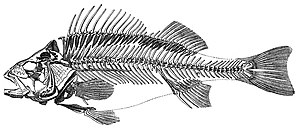

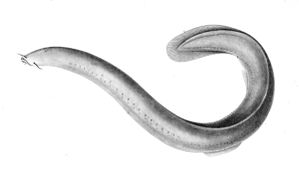



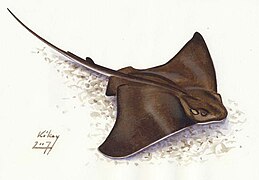
![The manta ray, largest ray in the world, has been targeted by fisheries and is now vulnerable.[14]](https://upload.wikimedia.org/wikipedia/commons/thumb/1/1d/Manta_ray_-_Chura-umi_Aquarium.jpg/237px-Manta_ray_-_Chura-umi_Aquarium.jpg)
![Sawfish are rays with long rostrums resembling a saw. All are now endangered or critically endangered[15]](https://upload.wikimedia.org/wikipedia/commons/thumb/4/48/Pristis_clavata_2.jpg/407px-Pristis_clavata_2.jpg)
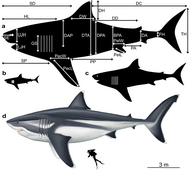
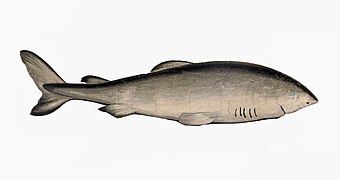


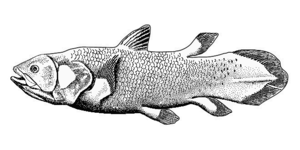
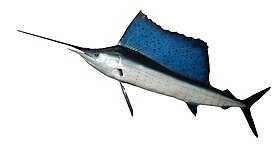


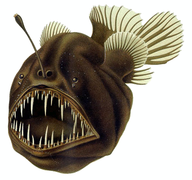

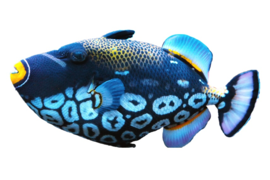
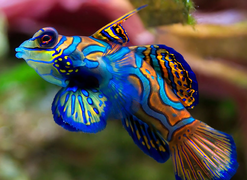

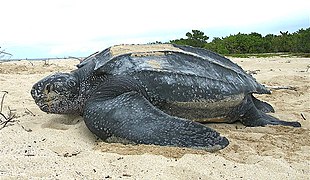

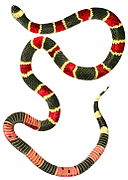
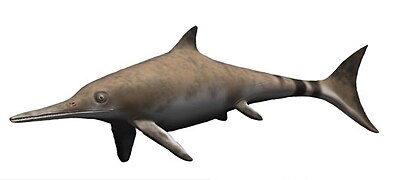

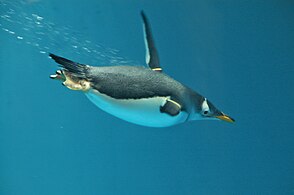
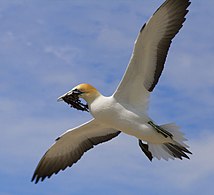
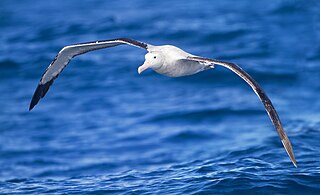
![Endangered blue whale, largest animal ever[39]](https://upload.wikimedia.org/wikipedia/commons/thumb/1/1c/Anim1754_-_Flickr_-_NOAA_Photo_Library.jpg/304px-Anim1754_-_Flickr_-_NOAA_Photo_Library.jpg)

![Bottlenose dolphin, highest encephalization of any animal after humans[40]](https://upload.wikimedia.org/wikipedia/commons/thumb/1/10/Tursiops_truncatus_01.jpg/316px-Tursiops_truncatus_01.jpg)





